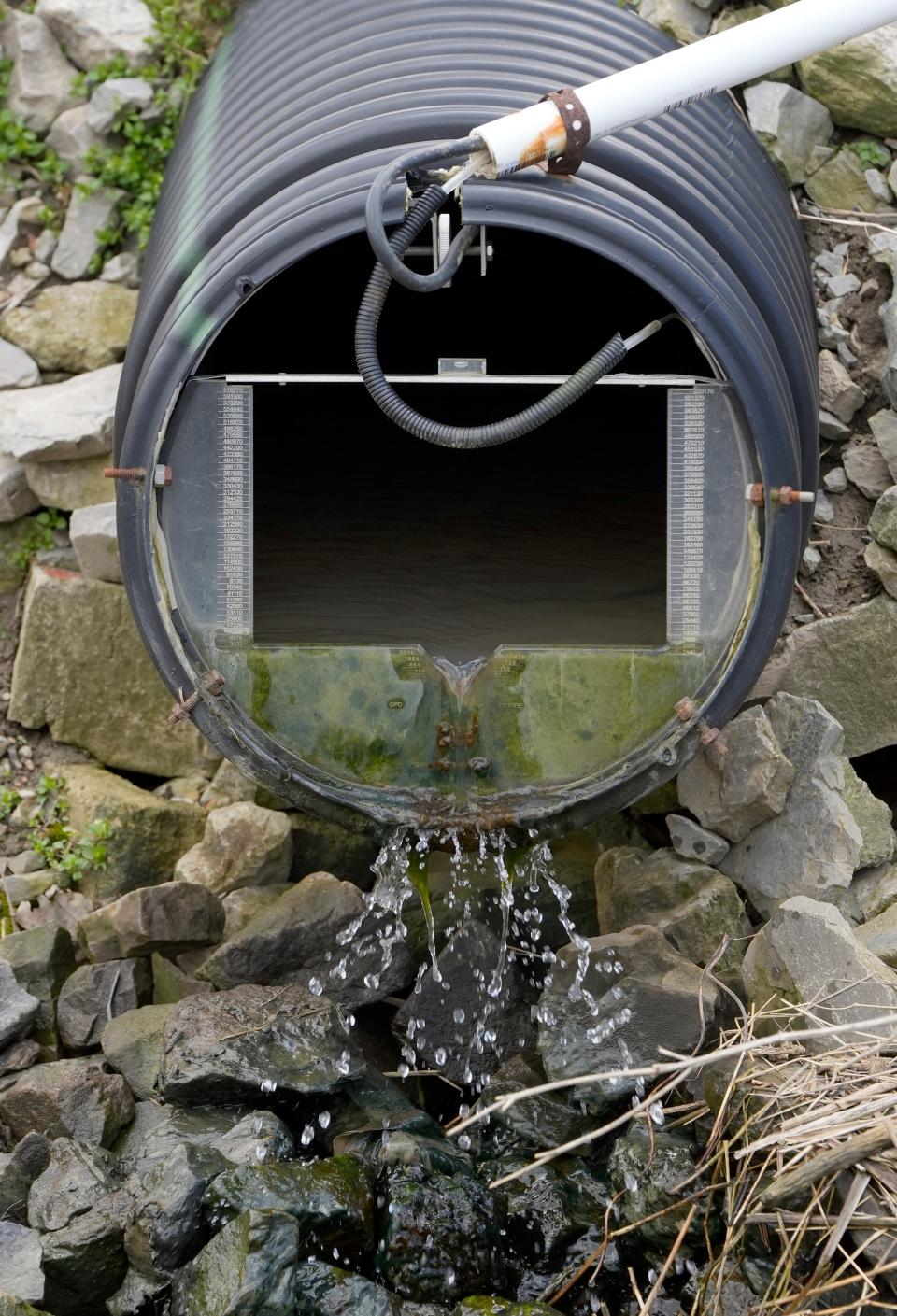Ohio farmers adapt to weather extremes that come with climate change

It may seem paradoxical, but Ohio is getting both wetter and dryer.
More rain is arriving in the spring and prolonged dry summers are drying out crop fields.
“With climate change here in Ohio and across much of the Midwest, the extremes are increasing," said Aaron Wilson, a research scientist and climate specialist with Ohio’s State University’s agricultural extension service.
As a changing climate alters weather patterns, the air will be warmer and hold more moisture, conditions that result in both heavy rain and prolonged drought, he said.
“What the research has shown is an increase in rapid oscillations between extreme wet and extreme dry,” Wilson said. “That’s what we’re likely to see in 2023.”
The agriculture community is among the groups most at risk from Ohio's worsening weather patterns.
Crops need dry conditions to plant in the spring — heavy rain washes seeds and nutrients that nourish them out of crop fields — and moisture in the summer to grow.
In other words, rain and drought are coming at the wrong times.
Who is affected?
The world has already warmed more than 1.1 degrees Celsius compared to pre-industrial times, climate scientists say, and immediate action is necessary to stave off more temperature increases.
The International Panel on Climate Change warns an increase of only 1.5 degrees Celsius would generate more destructive storms and result in heat waves that fan forest fires and rob crops of moisture in arid summers.
“We're already seeing those impacts in most of the state,” said Pete Bucher, Ohio Environmental Council chief of staff. “Severe rain events are increasing. The data is clear on that.”
And more climate pain is on the way, he said.
Electricity bills, for example, are likely to rise during intense heat waves. And that’s if you have power at all.
Lights across much of central Ohio flickered out in June, when a heat wave and severe storm overstressed the power grid, leading to a widespread power outage.
Challenges that come with excessive rain go beyond flooded basements, Bucher said. Pollutants caught in rainwater or soil runoff can seep into the rivers and lakes that Ohioans use for drinking water, he said.
“It’s going to impact all of our source water systems,” he said.
Taxpayers will, in all likelihood, have to fund the necessary upgrades for utility lines, water treatment systems, roads and bridges, along with air-conditioning units for schools and public buildings.
Crop growers, however, are among those most directly affected by a warming world.
'We never had an ideal planting time'
Higher temperatures benefit farmers in some ways, said Brent Sohngen, a professor of environmental and natural resource economics at Ohio State.
A warmer spring and fall means more time to plant and grow crops, he said.
“A lot of the trends have been good for farming,” Sohngen said. The weather “has gotten warmer in the last 90 years, and that’s gone together with the improved technology in agriculture to make crop yields continue to rise.”
But there is no question that a warming planet handicaps farmers, he said.
For example, corn and soybeans — Ohio’s most ubiquitous crops — are especially susceptible to heat waves, Sohngen said.
Austin Heil, a Hardin County corn and soybean farmer, found it impossible to plant his crops when the ground was dry.
“We never had ideal planting time this spring because it was always wet or there was rain on the way,” Heil said.
The summer brought more challenges, he said.
“We got into June, and it felt like we got all the way until the first part of July until we received another rain,” he said.
Heat-stressed corn is also vulnerable to diseases that can infect livestock, Heil said, which is a problem when more than a third of Ohio’s corn becomes livestock feed.
Despite these challenges, crop yields are up across Ohio, which farmers and experts attribute to improved planting techniques and a better understanding of how crops grow and adapt to the changing weather.
'We’re going to see more adaptations'
“The technology for crops has gotten better, and the ability to plant and take advantage of the growing season has gotten better,” Sohngen said.
Heil went through a laundry list of farming techniques he uses to keep moisture in the soil when it’s needed or let water drain from his fields when it isn’t.
Heil has equipment that finds the best part of the field to plant in and measures moisture and nutrients in the soil. He also doesn’t till his fields — which keeps fertilizer in the soil — and uses drainage techniques to ensure his cropland always has the right amount of water.
“As farmers, we're always trying to find ways to solve issues,” he said.
His solutions to changing weather patterns, however, are limited by his budget.
“If I could build a 600-acre indoor dome and if I could control the rain, the sunlight, and I could control the soil moisture, that would be absolutely ideal,” Heil said. “But none of us can afford to put 600 acres under a roof.”
More adjustments will be necessary in the future, experts say.
“The springtime planting may be pushed back” if rains become too intense, Sohngen said. “As things warm up, we're going to see more adaptations.”
pcooley@dispatch.com
@PatrickACooley
This article originally appeared on The Columbus Dispatch: Ohio farmers face more ... and less rain
